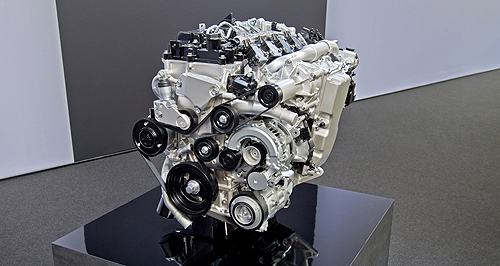News - MazdaMazda ‘SkyActiv-X’ to run alongside current enginesTrain of thought: SkyActiv-X was designed to meet tough European emissions regulations, meaning entry-level Mazda3s are likely to stick with current powertrain technology in Australia into the next generation due 2019. New blown compression-ignition engines to sell alongside current powertrains: Mazda10 Sep 2017 By BYRON MATHIOUDAKIS in FRANKFURT MAZDA’S forthcoming ‘SkyActiv-X’ supercharged compression-ignition engines will sell alongside rather than replace the existing spark-ignition SkyActiv-G petrol and SkyActiv-D turbo-diesel engines on which they are based. Aimed primarily at markets governed by increasingly strict European emissions regulations, the newly developed Spark Controlled Compression Ignition (SCCI) technology is expected to be offered as a premium low-consumption and higher-performance alternative in higher-series models, beginning with the next-generation Mazda3 small car due in 2019. This means the existing petrol and diesel engines will remain – albeit in evolved and improved states – well into the next decade, helping Mazda keep vehicles competitive in more price-sensitive markets such as Australia. It is still to be revealed whether the entire range of petrol and diesel engines developed under the SkyActiv banner – ranging from 1.3 to 2.5 litres – will gain the new technology. However, Mazda Motor Corporation (MMC) director and global research and development chief Kiyoshi Fujiwara said SCCI technology should see Japanese car-maker lead the industry in terms of wide-ranging internal combustion engine solutions that meet key targets in terms of real-world low emissions, consumption and driveability. “That’s a very rare situation to have three types of engines,” Mr Fujiwara told GoAuto at a technology forum in Frankfurt last week, adding that the company can mix and match engines according to regional requirements. “We have the SkyActiv-G and that’s still highly competitive globally, but we still have to upgrade that and then SkyActiv-D, and by then we will have the SkyActiv-X – so we can select the best formation for each region or country as required by the customer. “Also, we will add some very effective electrification coming, and some of the combination of engines we can do that to … depends on the market requirements and the regions. We have a completely modular development base in place so we can do that easily.” While Mr Fujiwara would not be drawn on the premium SCCI tech will add to the base engine, he admitted it would be akin to the difference between a regular petrol and diesel engine. “The cost of the SkyActiv-X is a little bit higher than the SkyActiv-G,” he said. “But not like that of the SkyActiv-D. It means that we probably have (to position it between) the SkyActiv-G and the SkyActiv-D.” SkyActiv-X is also the Mazda3’s strongest chance yet to challenge the Volkswagen Golf’s technological high ground, or even surpass it, according to Mr Fujiwara. “Yes and no,” he explained. “Golf is a bestseller, and it has been continuously and historically one of the best cars in this segment, therefore we have to compete against that. “But as a Mazda it has to have completely different values and characteristics. The feel of our car is not characteristic of German, or French or most Japanese cars. This is a Mazda, and that is our aim that we are trying to achieve through this next-generation platform. “It’s an extension the driver’s arms and foot, in that ‘jinba ittai’ way. This is our own characteristic.” Mazda Australia managing director Vinesh Bhindi said it was too early to discuss pricing and positioning of SkyActiv-X models. “Costing is a bit early to talk about,” he said. “This technology is still in the development phase and so still a little away. “But while with any drive innovation there is cost involved, at the same time Mazda would look at our competitive position in the market, and any new technology that we bring out has to be available to more customers rather than less. “Plus, the long-term cost benefits to the consumer also shouldn’t be overlooked. This is all about looking at emissions, CO2 and fuel economy, and if that’s where the drive is, in the end it may bring other savings to the table as opposed to just the purchase price.”  Read more |
Click to shareMazda articlesResearch Mazda Motor industry news |

















Facebook Twitter Instagram